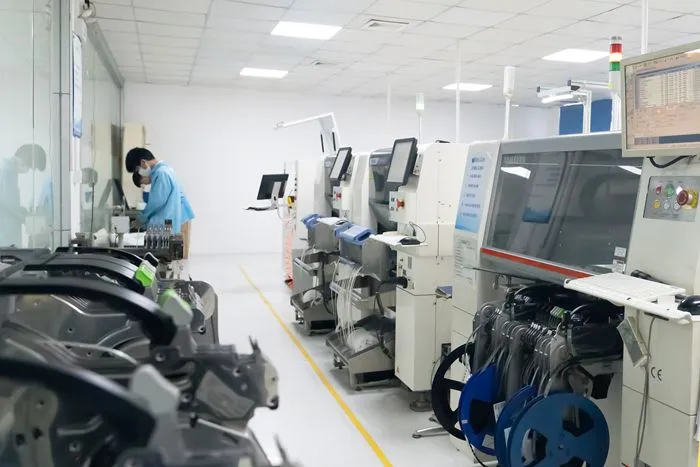The Foundation of Quality PCBA Production
Component Selection and Sourcing
The cornerstone of high-quality PCBA production lies in the careful selection and sourcing of components. Inferior or counterfeit parts can compromise the entire assembly, leading to performance issues, reliability concerns, and potential safety hazards. To mitigate these risks, it's crucial to establish relationships with reputable suppliers and implement a robust component verification process.
When sourcing components, consider factors such as the manufacturer's reputation, component specifications, and compliance with industry standards. Implement a system to track component batches and their origins, enabling traceability in case of any issues. Additionally, conduct regular audits of your suppliers to ensure they maintain consistent quality standards.
Another vital aspect of component selection is staying updated with the latest technological advancements. As the electronics industry evolves rapidly, newer components often offer improved performance, efficiency, and reliability. By incorporating these cutting-edge components into your PCBA designs, you can enhance the overall quality and competitiveness of your products.
Design for Manufacturing (DFM) Considerations
Integrating Design for Manufacturing (DFM) principles into your PCBA production process is essential for ensuring high-quality outcomes. DFM involves optimizing the PCB design to facilitate efficient and error-free assembly, ultimately leading to improved product quality and reduced manufacturing costs.
Key DFM considerations for PCBA production include:
- Optimizing component placement for efficient assembly and testing
- Ensuring adequate spacing between components to prevent solder bridging
- Designing appropriate pad sizes and shapes for reliable solder joints
- Incorporating fiducial markers for accurate component placement
- Considering thermal management requirements in the PCB layout
By addressing these DFM aspects during the design phase, you can significantly reduce the likelihood of assembly errors and improve the overall quality of your PCBA production. Collaborating closely with your manufacturing team or PCBA service provider during the design process can help identify potential issues early and implement effective solutions.
Quality Control Measures
Implementing comprehensive quality control measures throughout the PCBA production process is crucial for maintaining consistent high quality. This involves a multi-faceted approach that encompasses various inspection and testing methodologies.
Key quality control measures for PCBA production include:
- Incoming component inspection to verify authenticity and specifications
- Automated optical inspection (AOI) to detect solder defects and component placement issues
- X-ray inspection for identifying hidden defects in BGA and other complex packages
- In-circuit testing (ICT) to verify electrical connections and component functionality
- Functional testing to ensure the assembled PCB performs as intended
- Environmental stress screening to identify potential reliability issues
Implementing these quality control measures at various stages of the PCBA production process helps identify and address issues early, preventing defective products from reaching customers. It's essential to maintain detailed records of all quality control activities, enabling trend analysis and continuous improvement of your production processes.
Advanced Techniques for Superior PCBA Quality
Leveraging Automation and Industry 4.0 Technologies
The integration of automation and Industry 4.0 technologies in PCBA production has revolutionized the manufacturing landscape, offering unprecedented levels of precision, consistency, and efficiency. By leveraging these advanced technologies, manufacturers can significantly enhance the quality of their PCBA outputs while reducing human error and increasing production speeds.
Key areas where automation and Industry 4.0 technologies can be applied in PCBA production include:
- Automated component placement systems for high-speed, high-precision assembly
- Robotic soldering systems for consistent and repeatable solder joint quality
- Machine learning algorithms for predictive maintenance and quality control
- Internet of Things (IoT) sensors for real-time monitoring of production parameters
- Digital twin technology for virtual simulation and optimization of production processes
Implementing these advanced technologies requires significant investment but can yield substantial returns in terms of improved quality, reduced defect rates, and increased production efficiency. It's crucial to carefully evaluate your specific production needs and select technologies that align with your quality goals and production volumes.
Environmental Control and ESD Protection
Maintaining a controlled environment is paramount for ensuring high-quality PCBA production. Electrostatic discharge (ESD) and environmental contaminants can severely impact the reliability and performance of electronic assemblies. Implementing robust environmental control measures and ESD protection protocols is essential for safeguarding the integrity of your PCBA products.
Key considerations for environmental control and ESD protection include:
- Establishing ESD-protected areas (EPAs) with appropriate flooring, workstations, and equipment
- Implementing strict protocols for handling ESD-sensitive components and assemblies
- Controlling temperature and humidity levels in production and storage areas
- Utilizing air filtration systems to minimize airborne particulates
- Regularly monitoring and maintaining ESD protection measures
By creating a controlled environment and implementing comprehensive ESD protection measures, you can significantly reduce the risk of damage to sensitive electronic components during the PCBA production process. This proactive approach contributes to improved product quality and reliability, ultimately enhancing customer satisfaction and reducing warranty claims.
Continuous Improvement and Employee Training
Achieving and maintaining high-quality PCBA production is an ongoing process that requires a commitment to continuous improvement and investment in employee training. By fostering a culture of quality and empowering your workforce with the necessary skills and knowledge, you can drive sustained improvements in your PCBA production processes.
Key elements of a successful continuous improvement and training program include:
- Implementing a structured quality management system (e.g., ISO 9001)
- Conducting regular process audits and performance reviews
- Encouraging employee feedback and suggestions for process improvements
- Providing ongoing training on the latest PCBA production techniques and technologies
- Collaborating with customers and suppliers to identify areas for quality enhancement
By prioritizing continuous improvement and employee development, you can create a workforce that is not only skilled in current best practices but also adaptable to emerging technologies and industry trends. This approach ensures that your PCBA production capabilities remain at the forefront of quality and efficiency, delivering consistent value to your customers.
Conclusion
Ensuring high-quality PCBA production is a multifaceted endeavor that requires attention to numerous critical factors. From meticulous component selection and design optimization to implementing advanced quality control measures and leveraging cutting-edge technologies, each aspect plays a vital role in delivering superior PCB assemblies. By focusing on these key considerations and fostering a culture of continuous improvement, manufacturers can consistently produce high-quality PCBAs that meet the exacting standards of today's electronics industry. As the demand for increasingly complex and reliable electronic products continues to grow, maintaining a commitment to quality in PCBA production will be essential for success in this competitive market.
FAQ
What are the most common defects in PCBA production?
Common defects include solder bridges, insufficient solder, component misalignment, and damaged components.
How can I improve the yield in PCBA production?
Improve yield by optimizing design for manufacturing, implementing robust quality control measures, and investing in advanced assembly equipment.
What certifications are important for PCBA manufacturers?
Key certifications include ISO 9001, ISO 13485 for medical devices, and IPC standards for electronics manufacturing.
Expert PCBA Production Services | Ring PCB
Ring PCB, with its team of 500+ professionals, offers unparalleled expertise in PCBA production. Our state-of-the-art facilities, ISO-certified quality control processes, and 24/7 global support ensure the highest standards in PCB assembly. From design optimization to component sourcing and full turnkey solutions, Ring PCB delivers innovative, reliable, and cost-effective PCBA services tailored to diverse industry needs. Experience exceptional quality and efficiency in PCBA manufacturing with Ring PCB. Contact us at [email protected] to elevate your electronics production.
References
1. Johnson, A. (2022). Advanced Techniques in PCBA Manufacturing: A Comprehensive Guide. Electronics Production Quarterly, 37(2), 112-128.
2. Smith, B., & Davis, C. (2021). Quality Control Strategies for High-Reliability PCBA Production. Journal of Electronics Manufacturing, 18(4), 205-219.
3. Lee, S., et al. (2023). Industry 4.0 Technologies in PCBA Production: Implementation and Impact. International Journal of Advanced Manufacturing Technology, 45(3), 321-337.
4. Wilson, R. (2022). Environmental Control and ESD Protection in Modern PCBA Facilities. ESD Journal, 29(1), 45-58.
5. Thompson, E., & Garcia, M. (2023). Continuous Improvement Methodologies for PCBA Manufacturers. Quality Management in Electronics, 14(2), 178-192.






